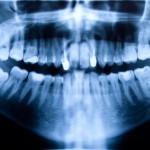
The extraction of impacted lower third molar teeth is one of the most commonly performed surgical procedures. As it requires deep pulpal and soft tissue anaesthesia it is considered to be a good model for studying the efficacy and safety of local anaesthetics.
The aim of this review was to compare the efficacy and safety of currently available local anaesthetics for lower third molar extraction.
Methods
Searches were conducted in the Medline, Cochrane Library, Scopus, OpenGrey and Clinical- trials.gov databases. Parallel group or split mouth randomised controlled trials (RCTs) assessing the efficacy or safety of two or more local anaesthetic agents for lower third molar removal were considered. Two reviewers independently selected studies, extracted data and assessed quality using the Cochrane risk of bias tool. The main outcomes were efficacy defined as, anaesthetic success and absence of a need for supplementary anaesthesia during the surgical procedure and safety defined by number of adverse events attributable to the local anaesthetic agent after administration (e.g., dizziness, pruritus, nausea, vomiting, disorientation, seizures, etc.). A random effects meta-analysis was undertaken for each outcome variable network followed by a meta-analysis (NMA).
Results
- 24 RCTs involving 2317 impacted third molars in 1451 patients were included.
- 7 RCTs were considered to be at high risk of bias, 10 at unclear risk and 7 at low risk.
- 13 adverse effects were reported during 1977 anaesthetic procedures. A mean adverse event rate = 0.1% (range 0- 19.2%).
- Meta-analysis of the direct comparisons showed significantly higher efficacy for 4% Articaine (ART) compared with 2% lidocaine (LID ); Odds Ratio (OR) = 34 (95% CI 1.26 -4.35).
- The NMA model showed statistically significant differences for the comparison between;
- 2% ART and 1% ropivacaine (1% ROP); OR= 6.11 (95%CI; 1.34 – 27.78),
- 4% ART and 2% LID; OR= 1.92 (95%CI; 1.13 – 3.27),
- 4% ART and 0.5% bupivacaine (BUP); OR= 2.09 (95%CI; 1.15 – 3.81),
- 4% ART and 1% ROP; OR= 5.62 (95%CI; 1.56 – 20.27).
- Based on the surface under the cumulative ranking curve (SUCRA) the ranking of the effectiveness and safety of the anaesthetic agents is as shoen in the table below.
| Anaesthetic agent |
SUCRA |
|
|
Efficacy |
Safety | |
| 2% articaine |
79.3 |
45.5 |
| 4% articaine |
79.2 |
41.8 |
| 2% mepivacaine |
68.0 |
42.3 |
| 3% prilocaine |
55.7 |
42.5 |
| 0.5% levobupivacaine |
54.5 |
47.0 |
| 0.5% ropivacaine |
49.5 |
58.8 |
| 2% lidocaine |
45.5 |
67.6 |
| 0.5% bupivacaine |
39.8 |
37.8 |
| 0.75% bupivacaine |
34.7 |
59.9 |
| 1.5% etidocaine |
33.4 |
58.8 |
| 1% ropivacaine |
10.3 |
48.0 |
Conclusions
The authors concluded: –
The most effective local anaesthetic for the extraction of impacted mandibular third molars appeared to be 4% articaine, with significant differences when compared with 2% lidocaine, 0.5% bupivacaine, and 1% ropivacaine. Lidocaine is the safest local anaesthetic, although all investigated solutions can be used safely.
Comments
The authors have searched a good range of databases identifying a reasonable number of RCTs investigated different local anaesthetic solution. In all 11 different anaesthetic solutions were included in the NMA with 2% lidocaine, 4% articaine and 0.5% bupivacaine being the most frequently involved agents. While 24 studies were included in this NMA a majority (71%) were at high or unclear risk of bias and although NMA allows indirect comparisons of the local anaesthetic agents to be made the number of studies involved in some of the comparisons is small. This together with the heterogeneity of the studies particularly in relation to the role of adrenaline and its concentration in different solutions means that the findings should be interpreted cautiously. As the authors highlight there are also potential limitations in relation to the reporting of adverse effects. Future studies would also benefit from the inclusion of patient reported outcomes.
Links
Primary Paper
Camps-Font O, Figueiredo R, Sánchez-Torres A, et al. Which is the most suitable local anaesthetic when inferior nerve blocks are used for impacted mandibular third molar extraction? A network meta-analysis [published online ahead of print, 2020 May 27]. Int J Oral Maxillofac Surg. 2020;S0901-5027(20)30161-2. doi:10.1016/j.ijom.2020.04.016
Other references
Dental Elf – 30th Nov 2018
